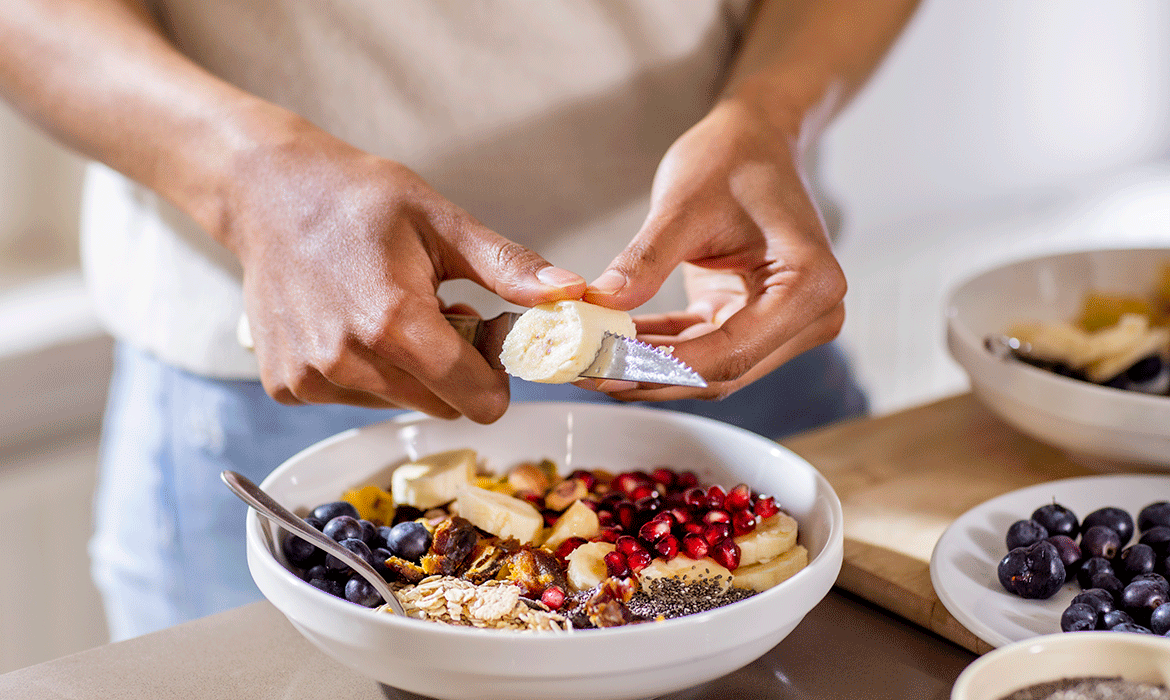4 Tips that Help Make Healthy Snacking Easy

Snacks are a big industry in the U.S. They constitute almost 25 percent of Americans’ calories and account for one-third of daily added sugar, according to a study published in PLOS Global Public Health.
Twenty-five percent of Americans consume between 400 and 500 calories per day in snacks. For many people, this means they’re consuming more calories via snacks than breakfast but without the nutritional value. And while this is a concern for all Americans, it’s especially concerning for the 1 in 10 Americans with type 2 diabetes and the 18 million with heart disease.
Researchers from The Ohio State University (OSU) analyzed survey data from almost 24,000 people older than age 30 who participated in the National Health and Nutrition Examination Survey (NHANES) between 2005 and 2016. NHANES collects 24-hour dietary information called a “recall” from each participant that includes details about the foods consumed and time frame. While a 24-hour recall is just a snapshot of one’s dietary habits, it does provide a lot of information on our nation’s nutritional habits when conducted on a large-scale basis.
Researchers also factored in HbA1c -- a blood test that measures the average blood sugar levels over the past three months. This allowed researchers to divide participants into four groups based on blood sugar levels, e.g., non-diabetes, prediabetes, controlled diabetes and poorly controlled diabetes.
Results showed:
- Snacks comprised between 19.5 percent and 22.4 percent of total calories.
- Typically, snacks were convenience foods laden in fat, salt, sugar and unhealthy carbohydrates, followed by alcoholic and sweetened non-alcoholic beverages.
- Snacking was light on healthier foods such as milk, dairy, fruit, grains and vegetables.
- Participants with diabetes reported healthier snacks. This was attributed to effective public health nutrition campaigns and personal nutrition education.
“I’m not surprised by these results,” says Bernard Kaminetsky, MD, medical director, MDVIP. “Snacking has been a big part of the typical American diet for decades.”
Louisiana State University (LSU) researchers concurred with OSU’s findings in that snacks contribute to about 20 percent of our daily calories. They found that Americans average between 1.2 and 3.0 snacks per day, according to a meta-analysis published in Nutrients.
Furthermore, LSU’s analysis also suggested that not all snacking is detrimental. Fruits and vegetables improved an overall diet, while unhealthy options contributed to more negative body compositions and bad cholesterol levels. Like OSU, they also found that snack choices were influenced by education.
Healthy Snacking Made Easy
Here are four tried-and-true tactics you can take to keep your snacking healthy.
Combine healthy fat, protein and complex carbohydrate. Healthy fats help you feel full longer and combining protein with a complex carbohydrate helps stabilize your blood sugar. Examples include:
- A small apple with two tablespoons of peanut butter combines a complex carbs and healthy fat and protein. This snack provides about 280 calories, 8 grams of protein, 16 grams of fat and 7 grams of fiber.
- Strawberries, Greek yogurt and chia seeds pair complex carbs (strawberries) and healthy fat and protein in the yogurt and chia seeds. This snack provides about 150 calories, 12 to 17 grams of protein, 8 grams of fat and 3 grams of fiber.
- Four whole grain crackers, one cup of sliced cucumbers, 3.5 ounces of hummus - 275 calories, 7 grams of protein, 10.5 grams of fat and 8 grams of fiber.
Be mindful. Only snack in response to hunger not stress. And don’t mindlessly snack while watching television, surfing the internet or working at your desk.
Plan ahead, prep in advance and take with you. Plan your snacks before you go grocery shopping. Prepare them in advance, maybe on a Sunday. Take them with you to work or errands.
Watch calories and sugar content in snack beverages. Many package “healthy snacks” like smoothies, yogurt and granola bars are laden with processed ingredients and sugar. Be sure to read the nutrition facts label.
Always check with your doctor before making dietary changes. If you don’t have a primary care physician, consider joining an MDVIP-affiliated practice. MDVIP-affiliated doctors have the time to work with you to focus on your health and wellness. Find a physician near you and begin your partnership in health »





